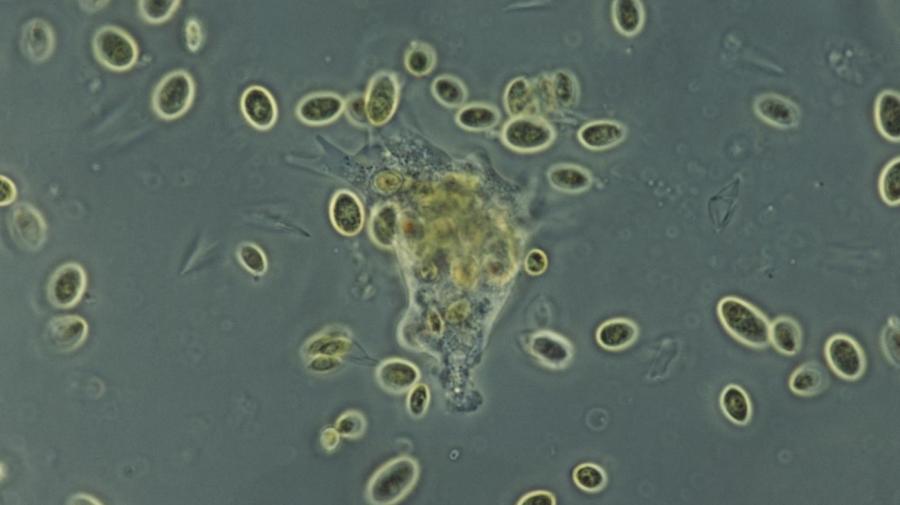How Does an Amoeba Move?

Amoebae move by growing an extension of their bodies in the direction of movement and then flowing into it. This extension is called a pseudopod because when it’s fully extended it resembles a limb, despite being only an extension of the amoeba’s plasma membrane.
An amoeba is a single-celled protist and therefore lacks true limbs. Moving through a medium without the flagellum of other protists requires a special mechanism for shifting the contents of the amoeba’s body. It accomplishes this by extruding a section of its protective outer layer, the plasma membrane, and creating a small mass that is farther along in the direction of movement than the main body of the amoeba. The contents of the amoeba’s body, mostly cytoplasm and various organelles along with the amoeba’s nucleus, then flow through the pseudopod and into the amoeba’s new location.
The amoeba’s movement is not just mechanical. The directed flow of cytoplasm within the amoeba’s body depends on changes to the viscosity of the cellular fluids. This factor is tightly controlled by special proteins that, when activated, change the consistency of the amoeba’s cytoplasm from thin and viscid to gelatinous. This chemical change renders the fluid at the end of the pseudopod relatively firm and allows the thinner cytoplasm of the amoeba’s body to flow after it.





